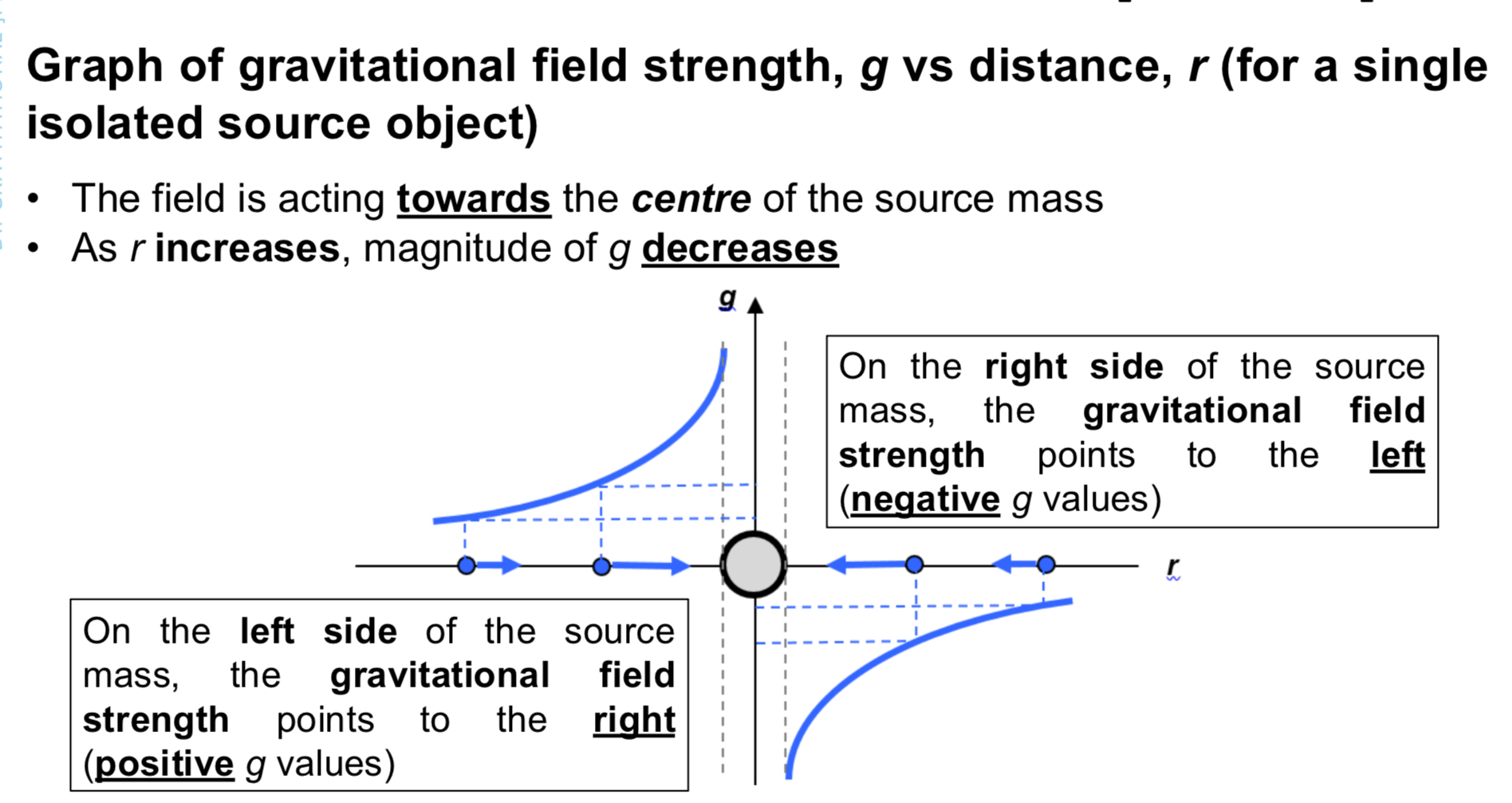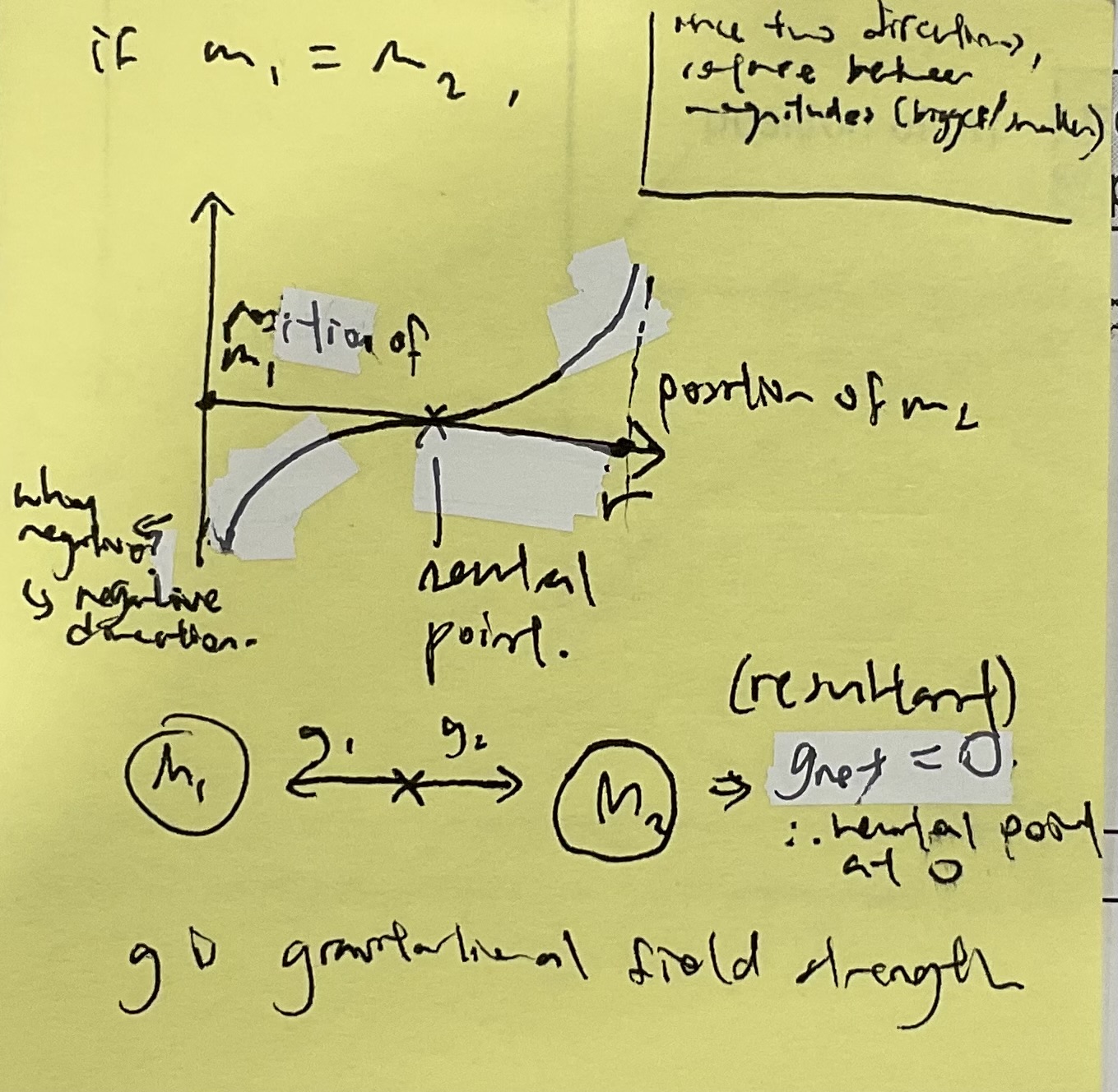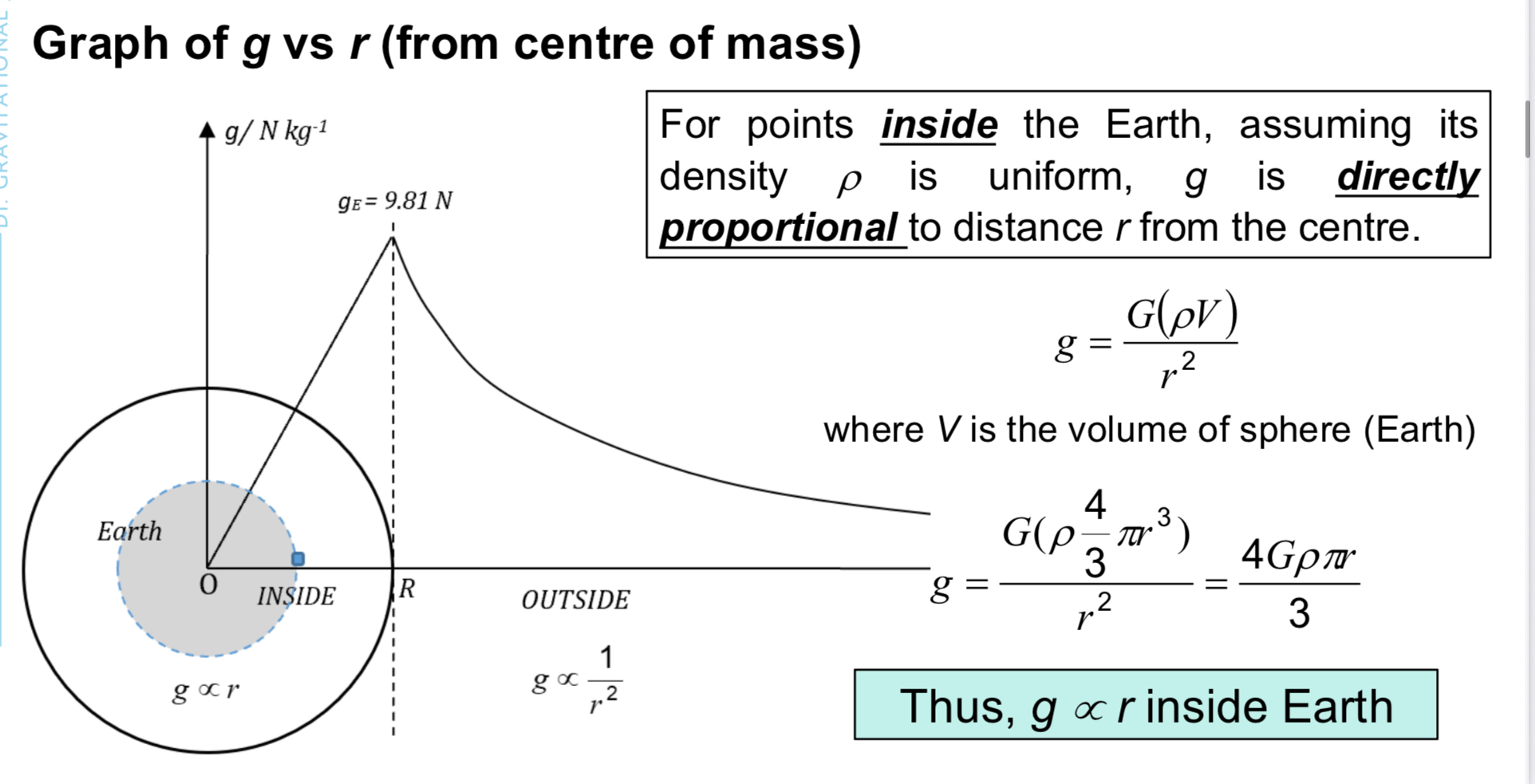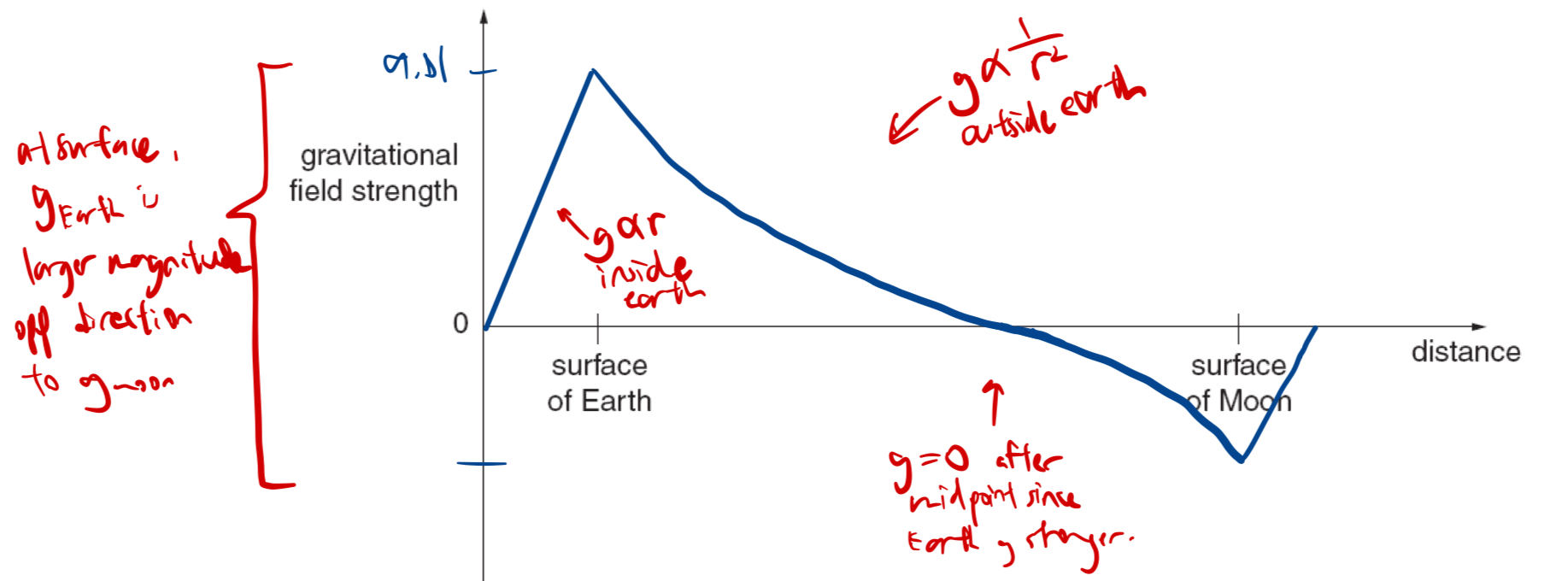phy D1 gravitational fields
1/16
There's no tags or description
Looks like no tags are added yet.
Name | Mastery | Learn | Test | Matching | Spaced |
|---|
No study sessions yet.
17 Terms
gravitational field
region of space surrounding a body, in which another body placed in it experiences a gravitational force (attractive) due to their masses
gravitational field near earth’s surface
field lines parallel and equally spaced → uniform field
gravitational field strength is constant at 9.8
gravitational field over large distances from earth’s surface
field lines directed radially towards earth’s centre, increasing spacing between field lines at further points
gravitational field is non-uniform, weakens with distance from earth’s centre
newton’s law of gravitation
two point masses attract each other with a force that is
directly proportional to product of their masses
inversely proportional to the square of their separation
F = Gm1m2 / r2 (unit: N)
note:
only for point masses → ie can only use for spheres when separation r is large compared to the radii of the spheres
there is an equal and opposite ATTRACTIVE force acting on each mass, even if masses are not equal (since it is m1m2)
gravitational force F of earth on satellite provides the centripetal force for satellite to orbit around earth
F follows direction of field lines
gravitational field strength
(at a point in the gravitational field) the gravitational force exerted per unit mass on a small mass placed at that point
note: it is a vector that acts at a point, even if there is no mass at that point. assumes the source mass (the mass generating the gravitational field) is a point mass.
g = F/m = GM/r2 (unit: N kg-1)
why does a=g?
g = F/m = ma/m = a
note: g is in N kg-1 but a is in m s-2, same magnitude but different units so they are different physical quantities
graph of gravitational field strength against distance for a single isolated source mass
note: inverse works too. direction depends on which direction is taken as pos/neg.

graph of gravitational field strength against distance for 2 point masses
note: if masses are different, neutral point will be nearer to the smaller mass

graph of gravitational field strength against distance from centre of mass
within earth, directly proportional to r
derived from mass = density X volume and volume = volume of sphere
outside of earth, based on formula, inversely proportional to r2

graph of gravitational field strength within/between earth and moon

rotational motion
tangential speed is large enough that it orbits
to keep moon in orbit, gravitational force of earth on moon acts as centripetal force (net force is towards centre of earth, but velocity direction always changing)
vorbit = sqrt (GM/R) where M is mass of earth (HL formula)
derived from GMm/r2 = mv2/r where m is mass of moon
centripetal force
Fcentripedal = ma = mv2/r = mw2r
acceleration taken from A2 data booklet formula
where m is mass of moon
w (omega) = 2pi/T (where T is the period of rotation)
T2 is directly proportional to R3 (kepler’s 3rd law)
derived from Fg = Fcentripedal
kepler’s 3rd law
T2 is directly proportional to R3
as object is further from source mass, period of oscillation increases
kepler’s 1st law
planetary orbits are elliptical with a star (the sun) at a focus (not centre! focus! remember your math ia)
T2 is directly proportional to R3 gives an elliptical graph
in calculations we assume circular path of orbit (but need know this theory)
kepler’s 2nd law
the radius vector from the star (the sun) to the orbiting body sweeps equal areas in equal times
since nearer, Fg increases, a increases, velocity increases → in the same time, the same area is covered
if time taken to travel distance 1 = time taken to travel distance 2 → area 1 = area 2
aimilarities/differences between gravitational force and electric force
Differences:
• Electric force acts on charges whereas gravitational force acts on masses.
• Electric force can be attractive or repulsive depending on the signs of the charges whereas
gravitational force is always attractive.
• Gravitational force between two masses does not depend on the medium in which they
are situated whereas electric force between two charges does.
Similarities:
• Both the gravitational force and the electrical force obey the inverse square law.
• Both forces are examples of action-at-a-distance.
explain how observations of the motion of planets allow scientists to determine the mass of the sun
acceleration due to gravity of sun = 4π2r/T2 = GM/r2
using r and T of orbiting planets